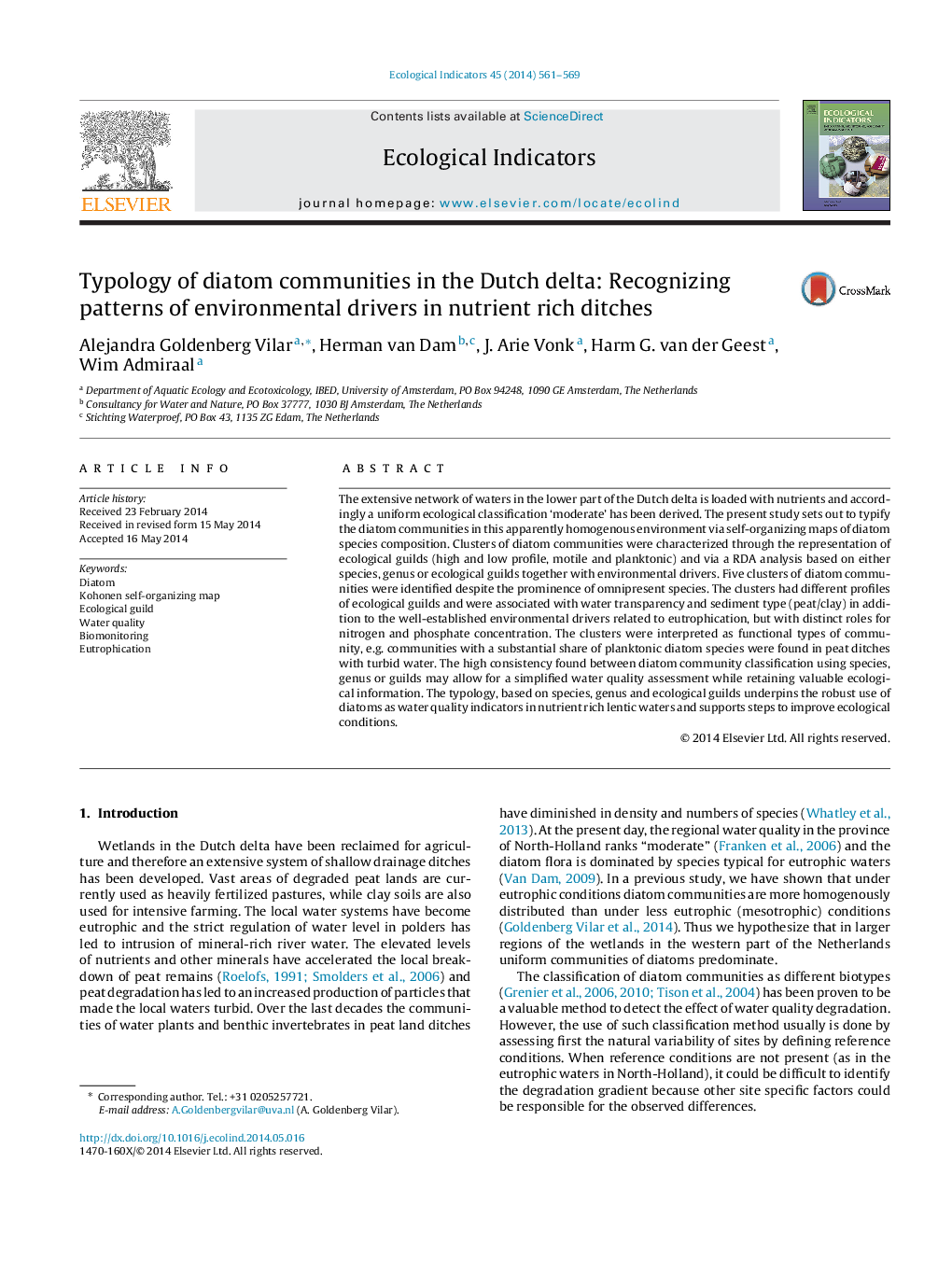| Article ID | Journal | Published Year | Pages | File Type |
|---|---|---|---|---|
| 4373097 | Ecological Indicators | 2014 | 9 Pages |
Abstract
The extensive network of waters in the lower part of the Dutch delta is loaded with nutrients and accordingly a uniform ecological classification 'moderate' has been derived. The present study sets out to typify the diatom communities in this apparently homogenous environment via self-organizing maps of diatom species composition. Clusters of diatom communities were characterized through the representation of ecological guilds (high and low profile, motile and planktonic) and via a RDA analysis based on either species, genus or ecological guilds together with environmental drivers. Five clusters of diatom communities were identified despite the prominence of omnipresent species. The clusters had different profiles of ecological guilds and were associated with water transparency and sediment type (peat/clay) in addition to the well-established environmental drivers related to eutrophication, but with distinct roles for nitrogen and phosphate concentration. The clusters were interpreted as functional types of community, e.g. communities with a substantial share of planktonic diatom species were found in peat ditches with turbid water. The high consistency found between diatom community classification using species, genus or guilds may allow for a simplified water quality assessment while retaining valuable ecological information. The typology, based on species, genus and ecological guilds underpins the robust use of diatoms as water quality indicators in nutrient rich lentic waters and supports steps to improve ecological conditions.
Related Topics
Life Sciences
Agricultural and Biological Sciences
Ecology, Evolution, Behavior and Systematics
Authors
Alejandra Goldenberg Vilar, Herman van Dam, J. Arie Vonk, Harm G. van der Geest, Wim Admiraal,
